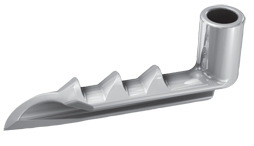 Nearly 80% of cataract surgery patients see an optometrist at some point during the immediate preoperative or postoperative stages. Thus, it is critical to stay abreast of the latest surgical tools and devices to ensure that our patients experience the best possible visual outcomes.
Nearly 80% of cataract surgery patients see an optometrist at some point during the immediate preoperative or postoperative stages. Thus, it is critical to stay abreast of the latest surgical tools and devices to ensure that our patients experience the best possible visual outcomes.
Here, we review the therapeutic benefits of a novel wound sealant and several advanced glaucoma drainage devices that can be implanted during a cataract procedure.
ReSure Sealant
Although most ophthalmologists now perform sutureless cataract removal, there are instances when even uncomplicated surgical incisions can leak. Specifically, one recent study of post-cataract patients showed that 48.8% of eyes leaked spontaneously and 97.6% leaked upon the application of mild pressure.1
A new wound sealant from Ocular Therapeutix, ReSure, has been shown to expedite postoperative healing more effectively than sutures or no treatment at all.1,2 In the past, surgeons would test the incision immediately following the procedure to check for signs of leakage or potential anterior chamber collapse.
If it did exhibit leakage, the surgeon typically would add sutures. However, this measure increases the likelihood of foreign body sensation, induced astigmatism and microbial contamination, as well as necessitates eventual suture removal.
ReSure is comprised of a synthetic, non-toxic polyethylene glycol hydrogel compound that contains approximately 90% water after polymerization. It has been shown to encourage more rapid, robust wound closure than sutures in the early postoperative phase, when the incision is most vulnerable to leakage or infection. In a pivotal clinical trial, just 4.1% of eyes in the ReSure Sealant group leaked after provocation with one ounce of pressure per square inch compared to 34.1% in the suture group.
The applied sealant is prepared by mixing ReSure with a diluent, which activates the solution. It is spread over the incision and gels in situ, protecting the surgical site during the immediate postoperative period.
ReSure contains a blue visualization agent to assist with application placement; this dissipates within a few hours of use. The sealant then sloughs off in the tears as the incision epithelializes during the first week after surgery––as such, there is no need for removal.
Most cataract surgery patients will report no sensation secondary to the application of ReSure; however, a few individuals may describe a foreign body sensation that’s most likely related to the incision itself.3 Upon viewing the treated eye at the slit lamp, you may notice a transparent, membranous sheet over the incision. This sheet will naturally dissolve as the epithelium heals over a few days.
Glaucoma Devices
Multiple studies show that as many as one in five cataract surgery patients also has glaucoma.4,5 Fortunately, minimally invasive glaucoma surgery (MIGS) devices specifically are indicated for use in conjunction with cataract surgery to lower intraocular pressure (IOP) in patients with mild to moderate primary open-angle glaucoma.
To date, just two MIGS devices have secured FDA approval: the Trabectome (NeoMedix) and the iStent (Glaukos). Other promising MIGS technologies currently under development or only available outside the United States include the CyPass Micro-Stent (Transcend Medical) and the Xen Gel Stent (AquaSys). (It’s important to note that Alcon’s Ex-Press Glaucoma Filtration Device also is available in the US, but isn’t a true MIGS prodcure because it requires the use of a bleb.)
For patients, the greatest advantage of MIGS procedures is a reduced dependence on topical IOP-lowering therapy. Additionally, these shunts dramatically reduce the incidence of pressure fluctuations secondary to poor dosing compliance––particularly while sleeping.6

| |
|
Magnified view of the iStent (Glaukos).
|
MIGS procedures also are far less invasive than conventional laser argon trebeculoplasty, which requires conjunctival removal to create a channel for aqueous outflow. Further, MIGS patients are less likely to experience postoperative hypotony, hyphema, blebitis and even endophthalmitis than those who undergo more traditional glaucoma surgeries.7,8
When comanaging patients who’ve undergone a combined MIGS/cataract removal procedure, you’ll likely notice the development of a microhyphema within the first few days post-op. This presentation typically will resolve within a week. If a true hyphema is present, manage it in the same fashion as any traumatic hyphema (i.e., dilate with atropine drops, check IOP and add a topical glaucoma agent if necessary, ensure that the patient isn’t using blood thinning agents and prescribe a topical corticosteroid Q2H). Take note that IOP will fluctuate dramatically in the first three months following this surgery, but will eventually stabilize. Also, patients may experience the development of peripheral anterior synechia in rare instances.
We are in the middle of a very exciting chapter in the history of cataract surgery. An estimated 3.3 million cataract procedures were performed within the last year alone.1,2 The current age range of the Baby Boomer generation virtually guarantees that this number will not decrease any time soon. Therefore, we should embrace more widespread use of these advanced technologies to ensure that we provide our patients with the best possible postoperative outcomes and increased freedom from topical medication use.
Drs. Karpecki and Shechtman have no direct financial interest in any of the products mentioned.
1. Guttman-Krader C. Study: Hydrogel sealant better than sutures. Available at: http://ophthalmologytimes.modernmedicine.com/ophthalmologytimes/news/study-hydrogel-sealant-better-sutures?page=full. Accessed July 28, 2014.
2. Hovanesian JA. Cataract wound closure with a polymerizing liquid hydrogel ocular bandage. J Cataract Refract Surg. 2009 May;35(5):912-6.
3. Kim T. Pivotal clinical trials: ReSure Sealant. 2013.
4. Mansberger SL, Gordon MO, Jampel H, et al. Reduction in intraocular pressure after cataract extraction: the Ocular Hypertension Treatment Study. Ophthalmology. 2012 Sep;119(9):1826-31.
5. Arriola-Villalobos P, Martinez-de-la-Casa JM, Diaz-Valle D, et al. Mid-term evaluation of the new Glaukos iStent with phacoemulsification in coexistent open-angle glaucoma or ocular hypertension and cataract. Br J Ophthalmol. 2013 Oct;97(10):1250-5.
6. Health Quality Ontario. Diurnal tension curves for assessing the development or progression of glaucoma: an evidence-based analysis. Ont Health Technol Assess Ser. 2011;11(2):1-40.
7. Wang W, Zhang X. Meta-analysis of randomized controlled trials comparing EX-PRESS implantation with trabeculectomy for open-angle glaucoma. PLoS One. 2014 Jun 27;9(6):e100578
8. Sahid S, Musch DC, Niziol LM, et al. Risk of endophthalmitis and other long-term complications of trabeculectomy in the Collaborative Initial Glaucoma Treatment Study (CIGTS). Am J Ophthalmol. 2013 Apr;155(4):674-80.

